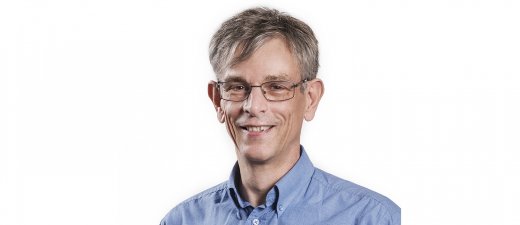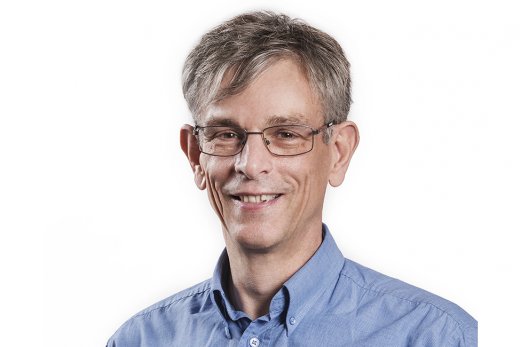19/02/2018
SensUs interviews: Kees Verduin
Have you ever taken a blood test in a hospital and wondered how they measure what’s inside your blood? We spoke with Kees Verduin, a medical microbiologist and the right person to ask this question. He tells us about his job, how they measure samples in the lab and why we really need to be concerned about the problem of antibiotic resistance.
Can you tell something about yourself and your job as a medical microbiologist?
My name is Kees Verduin and I studied microbiology at the University hospital of Utrecht. In my professional life I have worked for different Dutch hospitals, e.g. Erasmus Medical Center Rotterdam, St. Anna Hospital Geldrop, Maxima Medical Center Veldhoven, Elkerliek Hospital Helmond and Amphia Hospital, Breda. Nowadays I work as a medical-microbiology consultant at PAMM laboratories in Veldhoven. My role within PAMM is to advise doctors and hospitals how to diagnose patients, what antibiotics to use and how to prevent infections. Together with 8 other medical microbiologists, I supervise and support more than 70 laboratory technicians in their daily job to analyse thousands of medical samples coming from our region in the south of the Netherlands.
How did the role of medical-microbiologists evolve over the years?
Medical microbiologists have been around for more than 100 years. Well-known founders of the field are Anthony van Leeuwenhoek, Louis Pasteur and Robert Koch. Alexander Fleming, also known as the man who discovered benzylpenicillin (first penicillin antibiotic), is a good example of how medical-microbiologists worked in the past. Besides diagnosing patients, they used to do the laboratory analysis themselves as well, often in an improvised home laboratory. Nowadays, a team of technicians does this job in high-tech laboratories. The current role of medical-microbiologists is to supervise the laboratory and take decisions regarding test results and thereby advising treating physicians.
Does the widespread use of antibiotics affect your work as a medical-microbiologist?
Since antibiotics work very effectively in most cases, doctors tend to prescribe them often, many times even too often. You see this happening in many healthcare settings all over the world. However, there are big differences in usage of antibiotics: In some countries the use is very high while in others, for example in the Netherlands, the use is much lower. What one forgets is that many infections will heal without antibiotic therapy, yet we often prescribe antibiotics just to be sure or to reassure the doctor and the patient. A common thought is that as long as we use antibiotics to fight infections, we will be able to cure everybody. Unfortunately, that is not true. If we continue to prescribe too much antibiotics, we will have no cure for many serious infections in 30-40 years due to antibiotic resistance. So, my job as a medical-microbiologist gets harder with the day, because millions of people use antibiotics around the world and resistance is rising rapidly. For this reason we need to find new ways to fight infections, in a world where antibiotics are becoming almost useless in many cases.
Regarding the general problem of antibiotic resistance, what is in your opinion the main challenge and what is necessary in order to tackle it?
Antibiotic resistance is a big problem in the Netherlands, however it is not so bad in comparison with other countries in Europe or in the rest of the world. Together with Scandinavia, the Netherlands is one of the countries with the least deaths per year due to antibiotic resistance. Some people think that the biggest challenge is to convince big pharmaceutical companies to develop new antibiotics, however, I am afraid that there are things that money cannot buy. When looking at drug development, the most effective antibiotics that we use nowadays were discovered over 40 years ago. Unfortunately, it seems that we cannot successfully continue antibiotic development. I am an optimistic person, however I am afraid that humans might never find new revolutionary antimicrobial drugs ever again. So, antibiotic resistance is a big problem, and there is no remedy in sight at this moment.
As I stated before, antibiotic resistance is a huge problem worldwide. When looking at the numbers, we see that there are rising numbers of death due to antimicrobial resistance. Although this is still rare in the Netherlands, the situation in other countries is much worse. Greece and Italy have very serious problems with patients that can no longer be effectively treated with antibiotics.
The theme of SensUs 2018 is “Measuring antibiotics for better healthcare”. What is its relevance to society?
When giving an antibiotic one wants to be sure that the dose is right and the concentrations in the blood are high enough to be effective. In addition, some antibiotics are toxic and measuring concentrations in the blood can prevent serious complications, such as kidney failure or liver toxicity. Therefore, measuring antibiotic concentrations in blood is very important. Nowadays measuring concentrations is difficult and takes a long time, making it less useful for optimization of treatment.
The biomarker of SensUs 2018 is vancomycin. Can you tell something about it? Why is it important and what are the clinical problems?
Vancomycin is a last resort antibiotic, that we only prescribe when patients show resistance for other antibiotics. Unfortunately, vancomycin has a very small therapeutic window. For this reason, the administered dose should be precisely controlled to prevent resistance and toxicity. One clinical problem is that it is hard to determine the best treatment dose. A second problem is that it often takes days before vancomycin reaches the optimal concentration in the blood and works properly. If you are lucky, it will start working effectively after 2 days and that is considered to be really fast. However, some people need to wait much longer, which is in some cases too late.
How do you see the future for sensing technologies in the field of healthcare?
Here, at PAMM laboratories, we have the right equipment and medical staff to run almost every measurement one can dream of. However, when looking at hospitals in rural areas or hospitals in third world countries, there is a huge difference in what they can measure due to lack of medical equipment and medical staff. I really think that sensing technologies can close that gap. I dream of a world where people from Africa can be tested in the same way as people in the western world and biosensing might be the answer. Some sceptics say that biosensors cannot replace expensive medical measuring equipment, to them I say that people used to be sceptical about the first mobile phone and look how far we have come since then. So, I think that sensing technologies will help to further improve our healthcare.
What do you think about the SensUs competition? Do you have any advice for the teams and/or for the SensUs organization?
I really like the idea behind the SensUs competition, because it stimulates young talented students to look at socially relevant medical problems and seek for creative solutions. I hope that this competition will lead to novel ideas, which might change the way we analyse, work and think in the world of microbiology. My advice for the teams is to focus on ease-of-use and measuring speed. Do not hesitate to build an expensive biosensor, as long as it is easy-to-use and applicable to every person.


Facebook
YouTube
LinkedIn
Instagram